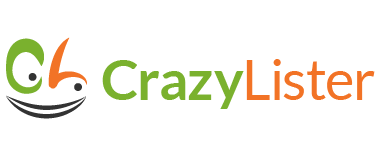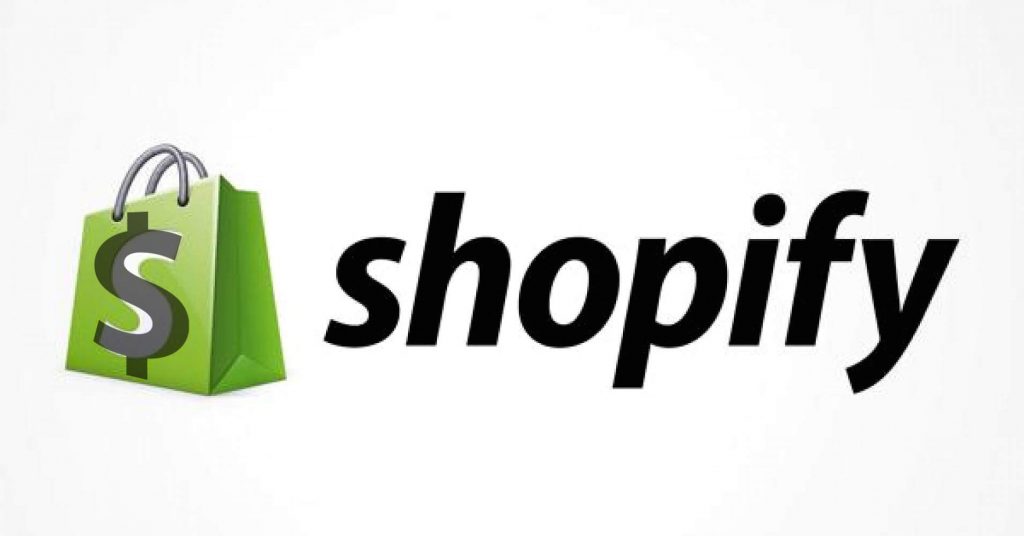
Shopify is arguably the ultimate retail platform on which one can open and manage their own independent eCommerce store. But a second before gaining your independence from the likes of eBay and Amazon you are going to want to figure out what this privilege is going to cost you ie:
- What pricing plans are available to you.
- What additional fees there are – including but not limited to transaction fees.
- Shopify POS pricing.
What Shopify plans exist and at what cost ?

There are currently 5 plans which Shopify offers its future store owners:
- Basic Shopify – priced at $29 a month.
- Shopify – priced at $79 a month.
- Advanced Shopify – priced at $299 a month.
- Shopify Lite – priced at only $9 a month, shopify doesn’t bother to include this in their pricing chart but rather hides it in a footnote of their pricing chart.One can only assume they don’t want to encourage merchants choosing the cheaper option:
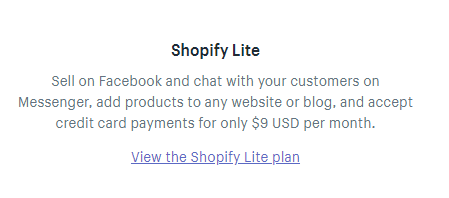
5. Shopify Plus – Also hidden as a footnote, Shopify plus is for large businesses and requires you communicating directly with Shopify – prices for ‘enterprise’ businesses are not listed and are tailored to your business’s needs though I do know that prices start at a minimum of $2,000 per month.
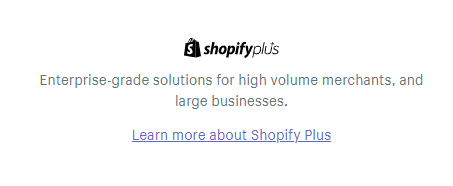
Breaking Down The Different Shopify Plans
In addition to price, there are other factors to consider when choosing which Shopify plan is right for you – let’s discuss each plan a little bit more in-depth and see which type of retailers each one can be a suitable option for:
Shopify Lite
This is the most basic Shopify option and is perfect for people who already have a fully functioning website or blog and just want to be able to add products for sale on those sites vis-a-vis Shopify. ‘Shopify Lite’ can actually work for you even if you do not have a website – you can actually use it to set up a whole business using Facebook and a ‘Messenger’ integration in order to handle the customer service side of things. Here are the main ‘Shopify Lite’ features as shown on Shopify’s site:
1. Facebook Sales
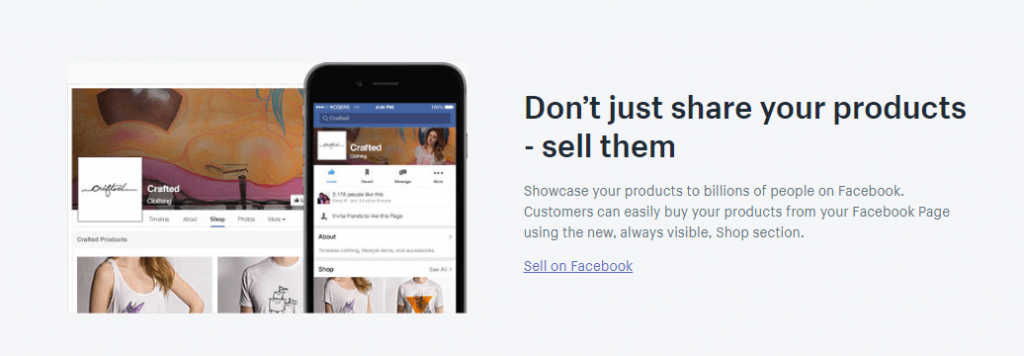
2. Messenger Customer Support
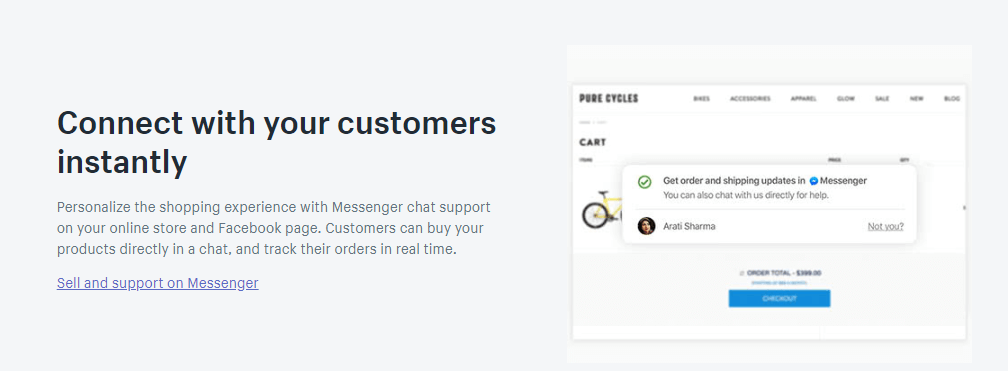
3. Buy Buttons
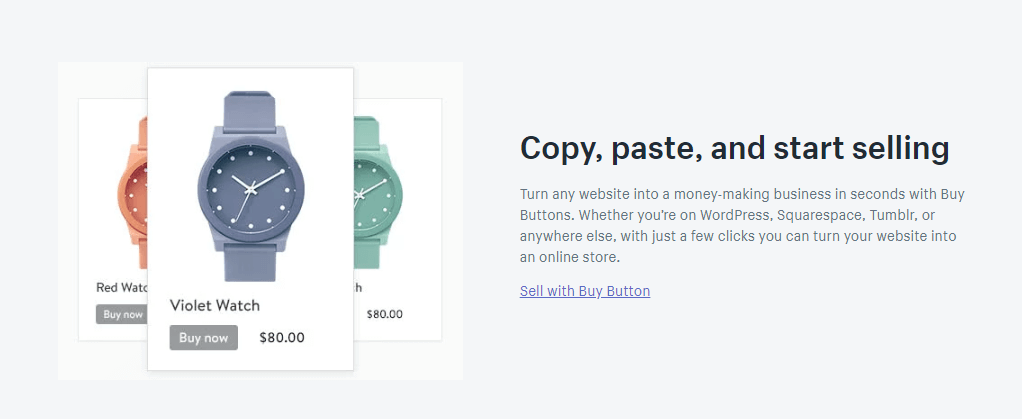
4. Accepting physical payments with the POS app
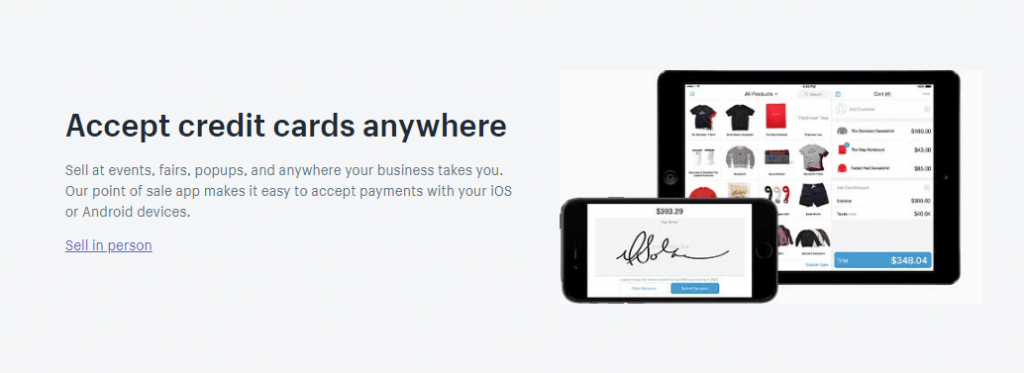
5. Creating and sending invoices

Which merchants can benefit most from ‘Shopify Lite’?
- New sellers on a tight budget.
- Retailers who need a POS in order to accept physical payments at trade shows and/or in-person transactions.
- Small businesses who already have a website or blog and want to easily and cheaply integrate sales on those platforms.
- Small businesses who want to easily and cheaply set up an eCommerce business on social media,
Basic Shopify
‘Basic Shopify’ is one step above ‘Shopify Lite’ and is intended for more ‘serious’ merchants.
Features:The main features which characterize this plan include:
- A website and blog which are fully functional.
- A discount code engine.
- A tool which helps with fraud analysis.
- An unlimited number of products which can be uploaded and added to your store.
- A free SSL certificate.
- Manual order creation.
- File storage support (unlimited).
- Customer support (24/7).
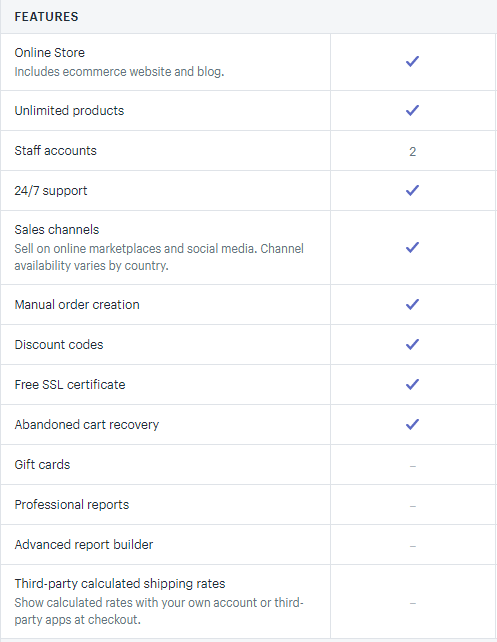
Shipping:
- You can print free shipping labels.
- Since you are now working with Shopify and its high volume business model you are eligible for up to a 64% discount on shipping when working with companies partnered with Shopify such as:
- USPS
- UPS
- DHL Express
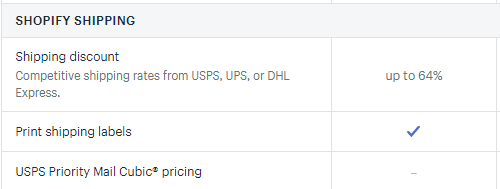
Payments:
The basic plan includes fraud analysis. In terms of transaction processing fees:
- If the item is purchased online with a credit card then you will pay:
2.9% of the transaction + 30 Cents
- If you have a brick & mortar store then you will pay a flat:
2.7% of the transaction
- If you use a different payment provider instead of ‘Shopify Payments’ you will pay:
2% of the transaction (in addition to the third-party transaction fee)

Point Of Sale (POS):
Shopify POS is a smartphone application which allows you to process orders and accept payments from anything from an Android phone to an iPad. The system helps you locate products, collect payment and issue a receipt via email.
The basic plan allows you to:
- Use the Shopify POS application.
- Get hardware support.
- Make use of third-party POS applications.
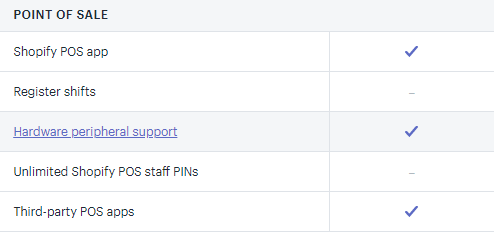
Which merchants can benefit most from ‘Basic Shopify’?
- Sellers who don’t want to be restricted in the scope of their sales yet are still on a budget.
- Sellers who do not currently have a blog or retail site which they can integrate with ‘Shopify Lite’ for example and therefore need to rely on Shopify to provide these ‘vehicles’.
- Small to medium sized businesses who need a maximum of 2 staff accounts.
Shopify Plan
‘Shopify’ is another step up on the Shopify plan ladder and seems to be the most popular Shopify plan as it includes virtually all the major functions sellers need and though its hefty $79 price tag is quite a long way off from the ‘Basic’ $29 or ‘Lite’ $9, it is still fairly priced when compared with the outrageous $299 for ‘Advanced’ or $2,000 for ‘Plus’.
Features:
- You receive everything from the basic plan including listing an unlimited amount of products.
- Having the ability to make use of ‘gift cards’.
- Being more organized in your business with ‘professional reports’.
- ‘Abandoned cart recovery’ so that you don’t lose out unnecessarily on potential business. This tends to be the main selling point for the ‘Shopify plan’ as this feature allows you to access crucial information of high intent customers. This includes an option for automated emails which are sent out at a predetermined interval after abandonment which beats going over abandonments individually and manually emailing those prospects!
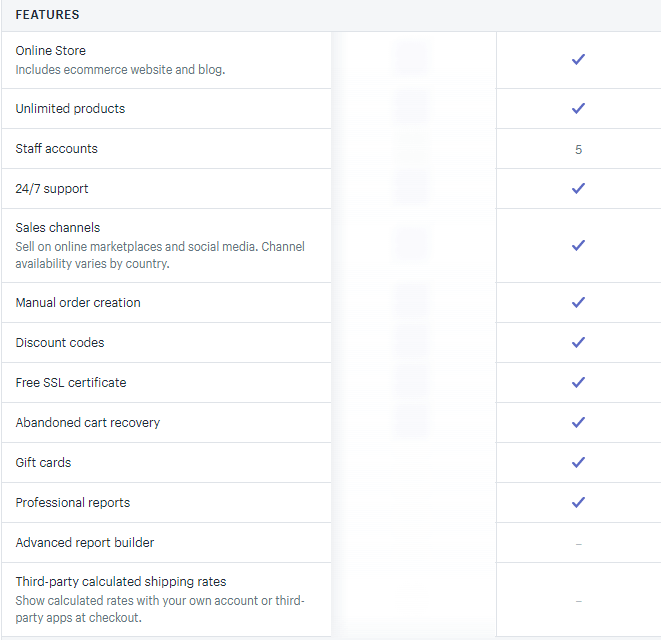
Shipping:
- You can print free shipping labels.
- Since you are now working with Shopify and its high volume business model you are eligible for up to a 72% (compared with the previous 64%) discount on shipping when working with companies partnered with Shopify such as:
- USPS (including priority mail cubic pricing)
- UPS
- DHL Express

Payments:
The ‘Shopify’ plan also includes fraud analysis. In terms of transaction processing fees:
- If the item is purchased online with a credit card then you will pay:
2.6% of the transaction + 30 Cents (0.3% less than ‘Basic’).
- If you have a brick & mortar store then you will pay a flat:
2.5% of the transaction (0.2% less than ‘Basic’).
- If you use a different payment provider instead of ‘Shopify Payments’ you will pay:
1% of the transaction (1% less than ‘Basic’ or in other words a 50% decrease)!

Point Of Sale (POS):
The ‘Shopify’ plan allows you to:
- Use the Shopify POS application.
- Register shifts.
- Get hardware support.
- Have unlimited Shopify POS staff PINs.
- Make use of third-party POS applications.
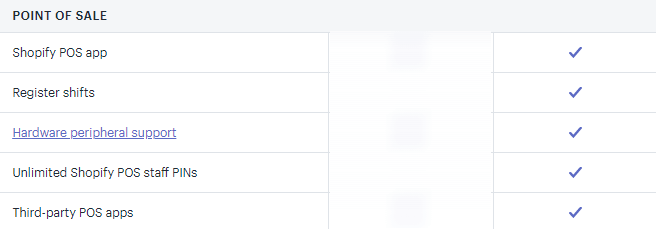
Which merchants can benefit most from ‘Basic Shopify’?
- Sellers who have a medium to large business as well as those who are in the midst of growing their business due to unlimited products + unlimited storage.
- Sellers who are earning enough to justify spending $79 a month as well as those who have a sufficiently large customer base using payment providers other than ‘Shopify Payments’ as the fee with this plan drops by 50% (ie from 2% to 1%)!
- Sellers who want to maximize potential profits and are not keen on losing out on potential sales.
Advanced Shopify
Features:
This is of course the most ‘upgraded’ of the plans and includes:
- All the features afforded you in ‘Basic’ and ‘Shopify’.
- Advanced report building for a big business which needs precise metrics and accountability.
- You have unrestricted product listing as well as unlimited storage space so you can upload as many pictures and videos as you need.
- Dashboard use for up to 15 people meaning you can hire the staff you need to help you run your business.
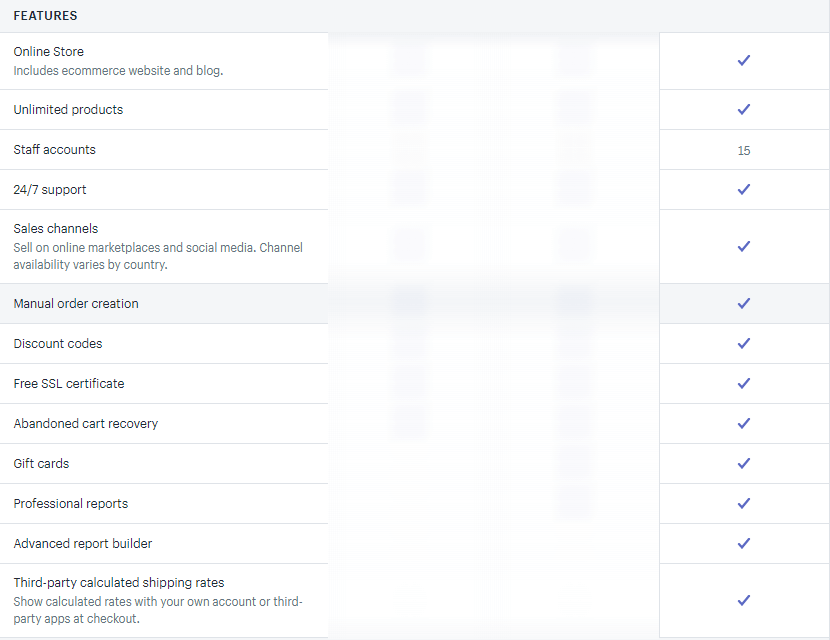
Shipping:
- You can print free shipping labels.
- Since you are now working with Shopify and its high volume business model you are eligible for up to a 74% (compared with the previous 72%) discount on shipping when working with companies partnered with Shopify such as:
- USPS (including priority mail cubic pricing)
- UPS
- DHL Express

Payments:
The ‘Advanced Shopify’ plan includes fraud analysis like all the rest. In terms of transaction processing fees:
- If the item is purchased online with a credit card then you will pay:
2.4% of the transaction + 30 Cents (0.2% less than ‘Shopify’).
- If you have a brick & mortar store then you will pay a flat:
2.4% of the transaction (0.1% less than ‘Shopify’).
- If you use a different payment provider instead of ‘Shopify Payments’ you will pay:
0.5% of the transaction (0.5% less than ‘Shopify’ or in other words a 50% decrease)!

Point Of Sale (POS):
The ‘Advanced Shopify’ plan allows you to:
- Use the Shopify POS application.
- Register shifts.
- Get hardware support.
- Have unlimited Shopify POS staff PINs.
- Make use of third-party POS applications.

Which merchants can benefit most from ‘Basic Shopify’?
- Enterprise businesses with large revenue streams who will really enjoy the reduction in fees as a percentage of those profit margins.
- Large inventory based companies with an aggressive, content-heavy marketing and branding approach.
- Companies who need advanced reporting for their investor or simply in order to improve business strategies and constantly adapt their business models to markets and consumer trends.
Shopify Plus
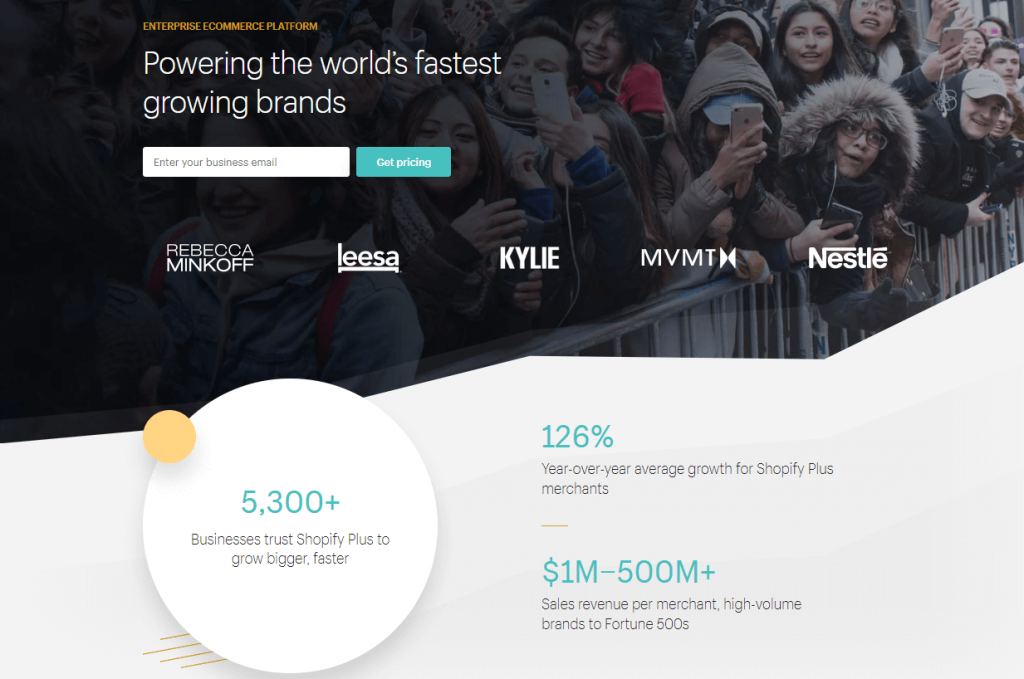
From the get-go, most of you guys will most likely never need ‘Shopify Plus’, it is mainly intended for large companies who need Shopify’s team of experts for customized store design and tailored marketing campaigns.
So what will you get for north of $2,000?
- 200 TB of storage space.
- A fully hosted website and blog if necessary.
- Zero transaction fees.
- Product order and management automation.
Which merchants can benefit most from ‘Basic Shopify’?
- Large companies like ‘Rebecca Minkoff’ with a large number of employees.
- Companies who need unlimited bandwidth so that they can have large amounts of products and information while simultaneously maintaining a quick and positive user experience.
- Companies who want to scale their eCommerce operations fast as was the case with MVMT which ‘Shopify Plus’ helped scale sales from $1 million to $60 million.

Shopify Point of Sale (POS)
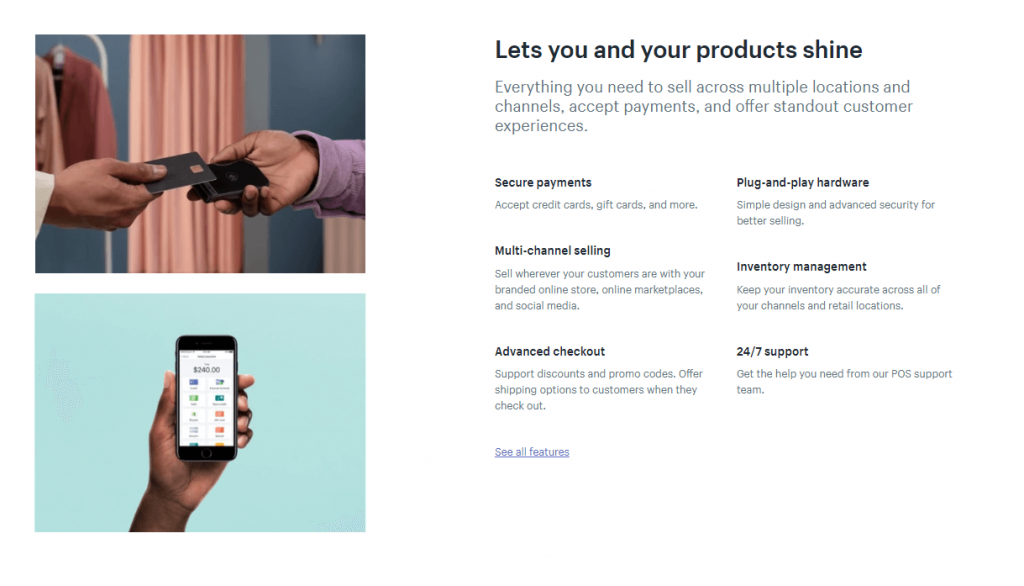
Shopify POS or Point of Sale is a combination of software and hardware which Shopify offers sellers so that they can run there multi-channel, online/offline retail business with ease. The software bit we covered above with almost every plan discussed above coming complete with some form of POS software. In terms of the hardware, you will have to make a very easy decision between two options:

- If you have a retail store with lots of traffic you will want to get the tabletop tablet version which can be purchased at the Shopify Hardware Store for $229:

If you are a small operation and travel a lot to fairs and various locations then the handheld version is your best bet which can also be purchased via the Shopify Hardware Store for $49:
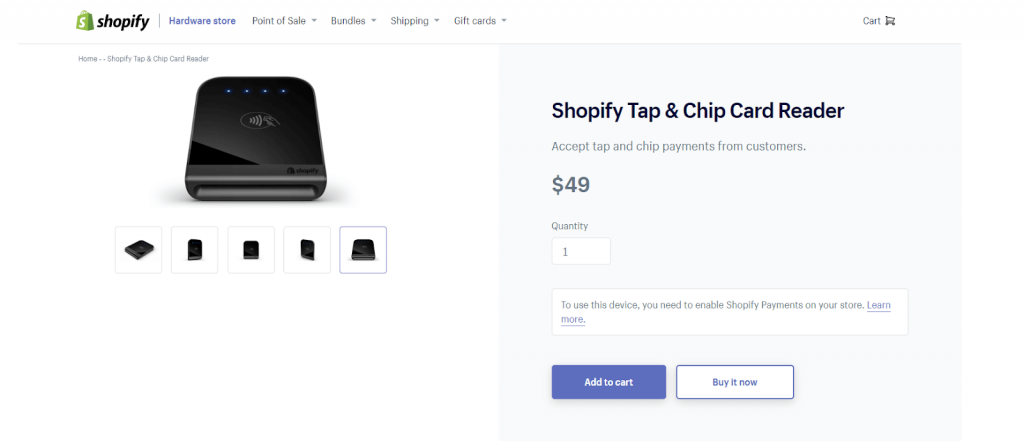
Check out Shopify’s full Hardware Overview to determine what to do in individual cases where:
- You already own some or all of the POS hardware made by companies other than Shopify ( the above resource has a list of all third-party hardware which does and does not integrate with Shopify hardware).
- You want to return or exchange hardware.
- You wish to purchase hardware from third-party vendors.
The real cost of a Shopify store
Now that you understand Shopify costs a bit more you realize that the pricing and costs are not as simple as which plan you choose but also include:
- Transaction fees as well as
- The purchase of POS hardware when you do physical sales as well.
But does it really end there?
Sadly, the answer is ‘no’. There are all kinds of other expenses associated with running a Shopify store. I will detail here all the extra expenses and/or fees that I am aware of at present. These include:
- Some things cannot be achieved with Shopify plans alone and as such this requires the purchase of shopify apps which come at an additional cost. This is hard to quantify as it is on a need basis based on your business. One example of this is an app which helps you set up your dropshipping business with Shopify (‘Importify’ costs $14.95 per month for example). Other examples include apps which improve speed on mobile devices or extending the number of product options you can use.
- Shopify themes – Yes there are 10 free Shopify themes but sometimes these themes are inadequate for your business’s needs in which case you can wind up spending anywhere between $140-$180 on a paid theme. If you still can’t get your needs met with these and require a developer, you could be looking at a few thousand dollars.
- Custom domain name – If you start off on Shopify using ‘yourdomain.myshopify.com’ – that is absolutely fine when you were a rookie. But once you start developing into a serious business and in order for people to take you seriously you will have to pay Shopify an additional $11.
Over To You
Shopify really does offer something for everyone, no matter how deep or shallow your pockets are. But ultimately it is up to you which plan to purchase, which POS system to choose and whether or not to up your game using paid templates and applications which take your store to the next level. I truly believe that if you make decisions based on where your business is today and how you expect it to grow realistically tomorrow then you will end up spending an amount that you and your business can genuinely afford. As I always say and truly believe about life and business – start small,and tread carefully and at last when your footing is strong and confident your spending capabilities and business will follow suit.
Please let me know if there are any other hidden fees associated with Shopify that I missed out on :)!

